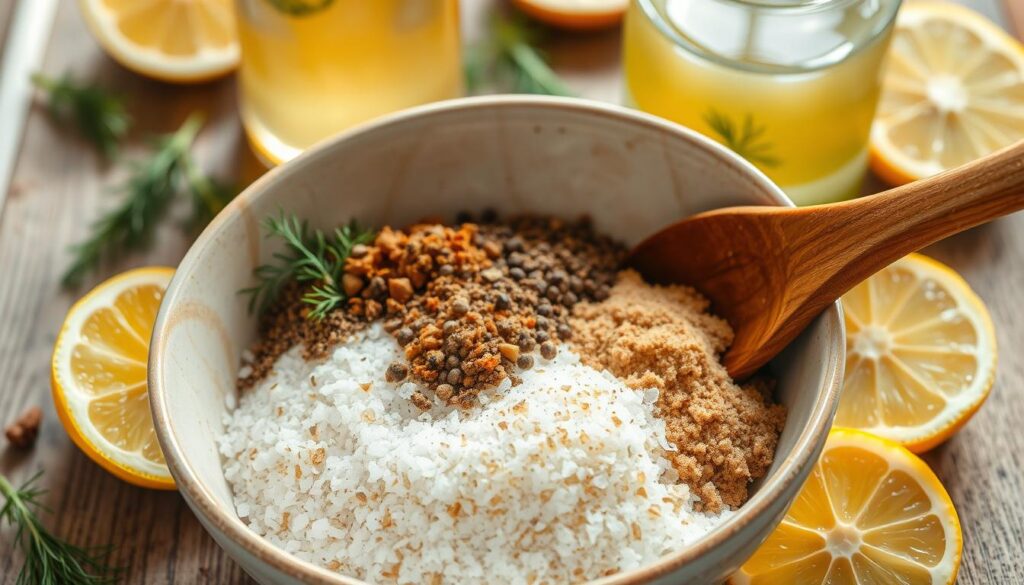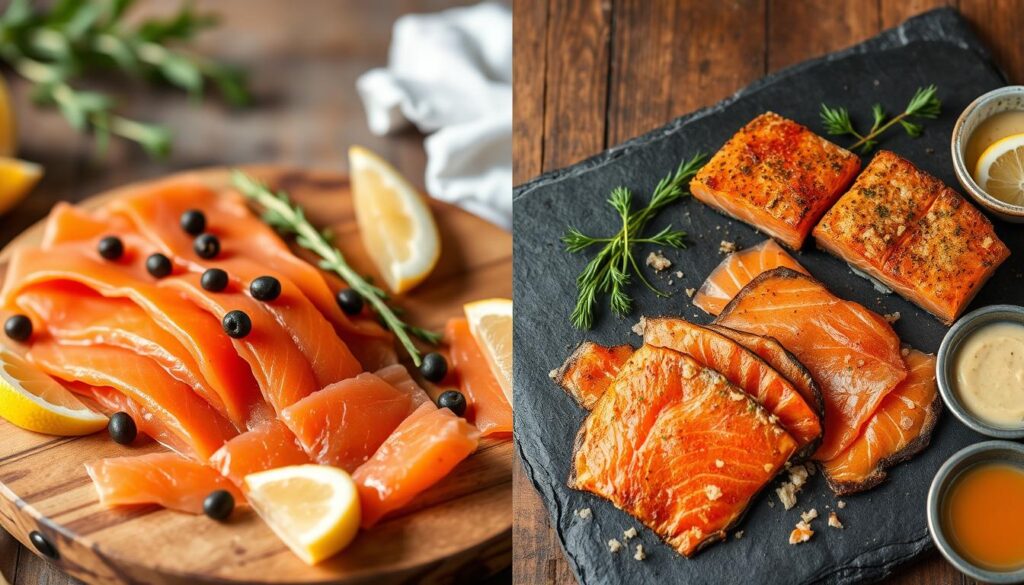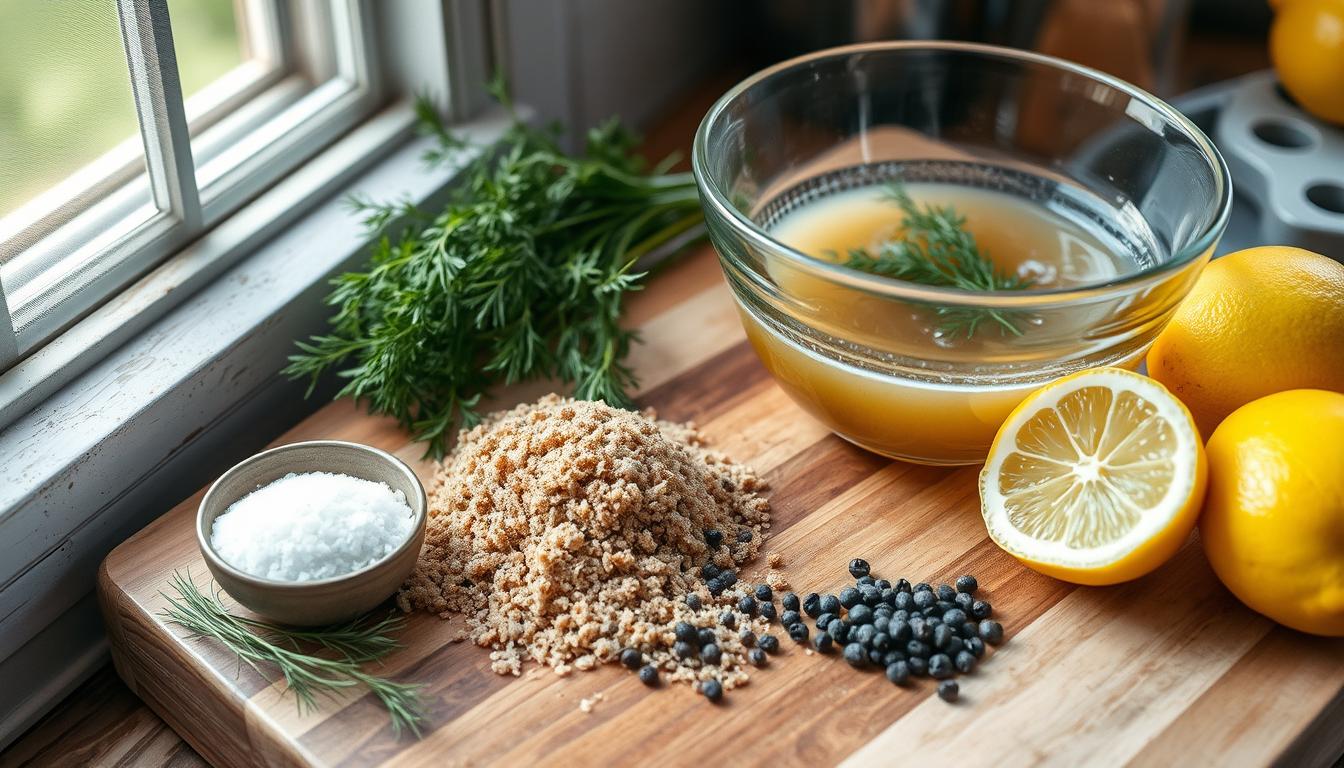smoked salmon vs hot smoked salmon
Imagine hosting a gathering, laughter echoing through your home, as the enticing aroma of smoked salmon fills the air. You take a bite, and the deep, savory flavors transport you to coastal shores where the waves kiss the land. This experience is not just a treat; it starts with the humble yet powerful foundation of a smoked salmon brine recipe.
The brining process is where flavor and texture begin to dance. It enhances the delicate qualities of the fish while preserving its natural beauty. Discovering how to master this technique not only elevates your culinary skills but also opens the door to the myriad smoked salmon benefits waiting to be savored.
Whether you favor a hot smoked salmon recipe or prefer cold smoking techniques, you’ll soon realize that the secret lies in that perfect brine.
Introduction to Smoked Salmon
Smoked salmon has a unique taste that comes from ancient ways of preserving fish. Nomadic fishers used smoke to keep fish fresh. This method has let cultures worldwide show off their cooking skills.
For centuries, different groups have smoked salmon in their own ways. This has led to many flavors and textures. Today, smoked salmon is loved in salads, on bagels, and in fancy appetizers.
When you start cooking with salmon, you’ll find many ways to enjoy it. There are many types of smoked salmon, from traditional to flavored. Knowing its history makes you appreciate it more and want to try new smoky flavors at home.
What is a Smoked Salmon Brine?
Understanding what is smoked salmon brine is key for better cooking. It involves soaking salmon in a mix of salt, sugar, and spices. This method improves flavor and texture.
The brine makes the salmon tender and slightly firm. Sugar adds sweetness, enhancing the flavor. This makes the fish taste better.
Brining does more than just taste good. It also keeps the salmon fresh longer. The right brine can turn ordinary fish into a delicious main dish.
Essential Ingredients for Your Smoked Salmon Brine
To make perfect smoked salmon, you need to know the key ingredients for the brine. You’ll need different salts for brining, as they help absorb flavors and keep the fish fresh. Kosher salt is best because its big flakes help control saltiness and add flavor.
Sugars are also crucial in your brine. Brown sugar adds a sweet, caramel taste that balances the salt. White sugar gives a cleaner taste. Mixing these sugars can create exciting flavors in your brine.
Herbs and spices make a big difference in flavor. Here are some to consider:
- Dill
- Black pepper
- Garlic powder
- Juniper berries
Don’t be afraid to try new combinations to make your smoked salmon unique. Using fresh herbs and quality salt will make your brine the best it can be.
Here’s a quick summary of the main ingredients and what they do:
| Ingredient | Type | Function |
|---|---|---|
| Kosher Salt | Salt for Brining | Preservation and flavor enhancement |
| Brown Sugar | Sugar | Adds sweetness and balances saltiness |
| Dill | Herb | Provides aromatic flavor |
| Black Pepper | Spice | Adds heat and complexity |
Using these ingredients will help you make delicious smoked salmon. It will impress your guests or satisfy your own taste buds.
How to Prepare the Brine for Smoked Salmon
Making smoked salmon brine is easy and makes the fish taste amazing. You’ll need salt, sugar, and water. A good brine mix is 2 parts salt to 1 part sugar, but you can tweak it to taste.
Here’s how to make your brine:
- In a big bowl, mix 1 cup of kosher salt, 1/2 cup of brown sugar, and 4 cups of water.
- Stir until the salt and sugar are fully dissolved.
- Think about adding garlic, dill, or peppercorns for extra flavor.
After mixing, put your salmon fillets in the brine. Make sure they’re fully covered. Use plastic wrap or a big resealable bag. It’s important to keep the brine cold. Put it in the fridge for at least 12 hours, but 24 hours is even better.
Remember, the longer the fish is in the brine, the saltier it gets. Adjust the time based on the fish’s thickness and how salty you like it.
After soaking, rinse the salmon under cold water and pat it dry. Now, your brined salmon is ready for smoking or can be stored in the fridge for a bit before cooking.

| Ingredient | Quantity |
|---|---|
| Kosher salt | 1 cup |
| Brown sugar | 1/2 cup |
| Water | 4 cups |
| Optional flavors (garlic, dill, peppercorns) | To taste |
Smoking Techniques: Cold Smoked vs Hot Smoked Salmon
There are two main ways to smoke salmon: cold smoked and hot smoked. Each method gives the fish a unique taste and texture. Knowing the difference can make your cooking better.
Cold smoked salmon is smoked at low temperatures, below 90°F. This keeps the fish soft and adds a light smoky taste. It takes days to smoke, and the fish is brined first. This makes it silky and luxurious.
Hot smoked salmon is cooked at higher temperatures, between 120°F and 180°F. It becomes firmer and tastes stronger. The fish is brined and then smoked quickly. This method is faster and perfect for those who want a quick, tasty salmon dish.
| Smoking Method | Temperature Range | Texture | Flavor | Duration |
|---|---|---|---|---|
| Cold Smoked Salmon | Below 90°F | Silky and Delicate | Subtle Smokiness | Several days |
| Hot Smoked Salmon | 120°F – 180°F | Firm | Bolder and Rich | A few hours |
Choosing between cold smoked and hot smoked salmon depends on what you like and what you have. Cold smoked salmon is for those who prefer a milder taste. Hot smoked salmon is for those who like a stronger flavor. Trying both can be a fun way to discover new tastes.
Smoked Salmon vs Hot Smoked Salmon
Learning about the differences between smoked salmon and hot smoked salmon can really help you enjoy them more. Each type is made in a special way, leading to unique tastes and textures. Let’s dive into what makes them different, making your cooking adventures even better.
Understanding the Differences
The main difference is in how they’re smoked. Cold smoked salmon is cured first, then smoked at low temperatures (below 80°F). This keeps its soft texture and adds a light smoky taste. On the other hand, hot smoked salmon is cooked at higher temperatures (above 120°F). This makes it firmer and gives it a stronger smoky flavor.
Taste and Texture Comparisons
When it comes to taste and texture, smoked salmon and hot smoked salmon are quite different. Cold smoked salmon is silky and smooth, perfect for bagels or sushi. Hot smoked salmon, with its flaky texture, is great in salads or on crackers.
| Feature | Smoked Salmon | Hot Smoked Salmon |
|---|---|---|
| Preparation Method | Cold smoking | Hot smoking |
| Cooking Process | Not cooked | Fully cooked |
| Texture | Silky and smooth | Flaky and firm |
| Flavor Profile | Subtle smokiness | Robust smokiness |
| Best Uses | Bagels, sushi | Salads, dips |

The Benefits of Smoking Salmon
Smoking salmon makes it taste better and keeps its nutrients. It’s a great choice for your diet because of its health benefits. The smoking process keeps the fish’s omega-3 fatty acids, protein, vitamins, and minerals intact. This helps improve your overall health.
Health Benefits of Smoked Salmon
Eating smoked salmon can be very good for you. It’s full of omega-3 fatty acids that are good for your heart. These fats can also help your brain work better and improve your memory.
Smoked salmon also has vitamins B12 and D. These vitamins boost your energy and help keep your bones strong.
Nutritive Value of Hot Smoked Salmon
Hot smoked salmon is known for its delicious taste and nutritional value. It’s packed with high-quality protein, which is great for building and repairing muscles. The smoking process also adds important minerals like selenium and potassium.
Best Smoked Salmon Dishes You Can Try
Smoked salmon is a culinary delight that shines in a variety of dishes. You can create an array of flavors and textures, each showcasing the unique taste of this ingredient. Here are some of the best smoked salmon dishes you can explore:
- Classic Bagel with Cream Cheese – A traditional breakfast favorite, spread cream cheese on a fresh bagel and top with smoked salmon, capers, and red onions.
- Smoked Salmon Salad – Combine mixed greens, avocado, cherry tomatoes, and smoked salmon, drizzled with a tangy vinaigrette for a refreshing meal.
- Smoked Salmon Pasta – Toss pasta with a light cream sauce, dill, and pieces of smoked salmon for a comforting dinner option.
- Smoked Salmon Dip – Blend cream cheese, herbs, and smoked salmon together for a savory dip perfect for crackers or veggies.
- Smoked Salmon Quesadilla – Layer smoked salmon with cheese and spinach in a tortilla, then grill until crispy for a unique twist on a classic dish.
Experimenting with these smoked salmon recipes can transform any meal into a gourmet experience. The versatility of cooking with smoked salmon allows you to enhance appetizers, salads, and main courses effortlessly.
How to Smoke Salmon at Home
Smoking salmon at home is a fun cooking adventure. Knowing the right smoking equipment is key. You can use a basic home smoker, electric or traditional, for great results. Look into options like the Weber Smokey Mountain or Masterbuilt electric smokers.
Before starting your DIY salmon smoking project, get all the needed stuff:
- Fresh salmon fillet
- Brine mixture (salt, sugar, and spices)
- Wood chips (such as hickory or applewood)
- Smoker
- Thermometer
Start by brining the salmon as suggested. Then, rinse and dry it before smoking. Heat your smoker to 175°F to 225°F. Keep an eye on the salmon’s internal temperature until it hits 145°F for safety and taste.
Watch the wood chips to keep the smoke steady. Learning to manage temperature will improve your smoking. Adjusting the smoking time and conditions will help you make perfect smoked salmon.
Learning to smoke salmon at home leads to tasty results and boosts your cooking skills. You’ll impress everyone with your cooking talent.
Common Mistakes When Brining Salmon
Brining salmon is a delicate process. It’s easy to make mistakes that can ruin your dish. Knowing the common salmon preparation errors can improve your results. One big mistake is getting the incorrect salt-to-sugar ratio.
Getting this ratio right is key to flavoring without overpowering the fish. Too much salt makes the salmon too salty. Not enough salt means it’s under-seasoned.
Another common mistake is brining for the wrong amount of time. Many people don’t brine long enough, leading to uneven seasoning. To avoid this, follow specific brining tips on timing. A good rule is to brine fillets for at least 4 hours but no more than 12 hours.
Using the wrong flavorings can also disappoint. Some forget to add aromatic herbs and spices that enhance the salmon’s taste. Try using dill, garlic, or citrus zest to improve the flavor. Make sure the flavorings you choose go well with your brining mix.
To improve your brining skills, check out this table of common mistakes:
| Mistake | Impact | Solution |
|---|---|---|
| Incorrect salt-to-sugar ratio | Overly salty or bland fish | Follow precise recipes |
| Improper brining times | Uneven seasoning | Stick to recommended times |
| Ineffective flavoring methods | Lackluster taste | Add complementary herbs and spices |
Conclusion
In this smoked salmon summary, we’ve looked into brining and smoking techniques. These methods make your food taste better. A good brine improves the salmon’s flavor, texture, and quality.
Knowing the difference between cold and hot smoked salmon helps you choose what you like best. Cold smoked salmon is delicate and buttery. Hot smoked salmon has stronger flavors.
Brining is great because it keeps the fish moist and adds flavor. Whether you like cold or hot smoked salmon, learning these methods is fun. Trying different brining techniques can lead to amazing flavors.
Exploring smoked salmon’s flavors and techniques is rewarding. By mastering smoking and brining, you’ll make dishes that wow everyone. So, dive into the world of smoked salmon and enjoy the journey.

